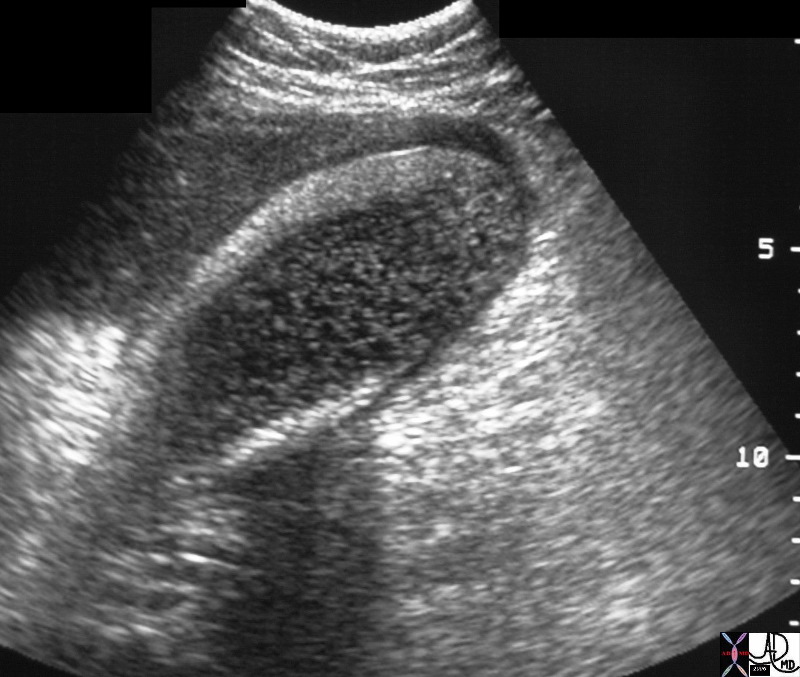The Common Vein Copyright 2008
Alok Anand
Definition
Empyema of the gallbladder is a purulent infection of the gallbladder characterized by bacterial growth, and consequent accumulation of purulent material.
It is typically caused by cholecystitis, with obstruction of outflow of the cystic duct, followed by infection. Typical offending agents causing empyema are E. coli, Klebsiella pneumoniae, Streptococcus fecalis, Bacteroides, and Clostridium species.
This disease, if untreated may result in systemic infection, sepsis and perforation.
Structurally, empyema is characterized by a large, distended gallbladder filled with purulent material (pus) and a normal biliary tract.
The functional changes are in the outflow of bile from the gallbladder. Bile remains in the gallbladder, providing a nidus for infection. The gallbladder is unable to receive process nor excrete new bile and is excluded from the loop of bile flow.
This disease may present clinically as a late manifestation of cholecystitis. It may also be noted intraoperatively during cholecystectomy.
Clinically, patients experience symptoms similar to that of acute calculus cholecystitis, with RUQ pain, sometimes radiating to the shoulder that is intense shortly after a fatty meal. Patients may have more intense fever and chills, possibly rigors.
Gallbladder empyema is diagnosed by clinical presentation, and confirmed with imaging. Patients will have a positive Murphy?s sign. Elevated white count will be noted, as well as alkaline phosphatase. In complicated cases, the obstruction may also cause an elevated bilirubin level. Ultrasound is the preferred imaging modality, revealing accumulation of complex usually echogenic fluid in the gallbladder. It is unusual for CT to be able to distinguish between empyema and acute cholecytitis since its sensitivity to fifferentiate between complex bile and pus is limited. Nevertheless it us able to identify acute complicated cholecytitis, and treatment is along the same lines. ERCP should not be attempted if empyema is suspected, because the increased pressure created by injection may induce septicemia, and treatment should be institued if the diagnosis is suspected.
Empyema is treated immediately with systemic antibiotics. It should be drained percutaneously and emergently. Later, after inflammation is reduced, removal of the gallbladder is performed electively. If this condition is discovered at the time of gallbladder removal, a laparascopic procedure will often be converted to an open one.
 Complex Fluid Filled Gallbladder – Empyema Complex Fluid Filled Gallbladder – Empyema |
| 48010.800 gallbladder fx thick walled shadowing cholelithiasis complex fluid dx gallbladder empyema Courtesy Laura Feldman |
references
Pace Benjamin Empyema, Gallbladder eMedicine Updated July 2008
